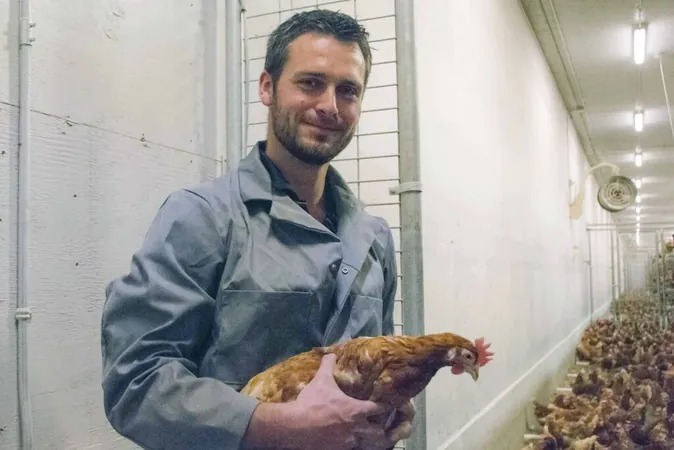
Revolutionary Hands-Free Test Quickly Detects Harmful Bacteria in Liquids!
2024-11-26
Author: Benjamin
Introduction
In a groundbreaking advancement for public health and food safety, researchers at McMaster University have unveiled a rapid, hands-free test capable of detecting disease-causing bacteria in various liquids, from lake water to urine, and even milk! This innovative method is as simple as observing a color change, making it accessible for anyone, regardless of training.
The Technology Behind the Test
The collaborative efforts of engineers and biochemists have resulted in a biogel test that identifies notorious bacteria such as E. coli and listeria, delivering results in a fraction of the time required by traditional lab cultures—just hours instead of days. By embedding harmless bacteriophages within the gel, this test can pinpoint target bacteria in low concentrations.
How Bacteriophages Work
Bacteriophages, the most abundant biological entities on Earth, are specifically programmed to destroy certain types of bacteria. When applied in the test, these phages latch onto their designated bacteria, leading to the release of intracellular materials that trigger a noticeable color change. If no harmful bacteria are present, the color remains unchanged.
Research Validation
While explaining the innovation, Dr. Zeinab Hosseinidoust, a leading researcher in bacteriophage bioengineering, stated, "This innovation allows us to harness the destructive power of phages in a new and efficient way." The effectiveness of the test has been confirmed through trials with urine samples collected from patients at Hamilton Health Sciences, showing consistency with traditional lab tests, as well as successful detection of E. coli in lake water samples.
Real-World Applications
The utility of this test extends far beyond the lab environment. As noted by Dr. Tohid Didar, it can be employed in various settings including food safety, environmental monitoring, and even clinical applications. Imagine being able to quickly ascertain whether that leftover food or the water in your home is safe to consume, all without a lengthy trip to the doctor or testing facility.
The Need for Fast Detection
There’s an urgent need for such detection systems. Recent events highlighted by the researchers include a tragic listeria outbreak linked to plant-based milk that resulted in two deaths and ten illnesses in Canada. Fast detection methods like this new test could be vital in preventing similar public health crises in the future.
Empowering Consumers
Co-author Akansha Prasad highlighted, "We could provide consumers with the power to test their own food and water." This immediate feedback could greatly improve reactions to potential outbreaks, allowing consumers to make informed decisions about what they consume.
Adaptability of the Test
Furthermore, the adaptability of this test means that it can be tailored to detect a variety of bacteria by using different sets of bacteriophages and DNA probes, ensuring comprehensive coverage against multiple pathogens such as salmonella and listeria.
Significance of the Research
The implications of this research are significant. As access to clean water remains a concern for many—12% of Canadians lack municipal piped water—this technology could provide peace of mind to those who rely on questionable water sources.
Future Directions
With plans to bring this innovative technology to the commercial market, the researchers are optimistic about obtaining necessary approvals and partnerships. Lead author Hannah Mann stated, "This test could revolutionize the way we approach safety in food and water, ultimately enhancing public health significantly."
Conclusion
The world remains vigilant for new methods to enhance food safety and public health. McMaster University's invention could be a game-changer, ensuring quick and reliable results that allow consumers and health professionals alike to respond to contamination threats effectively. Stay tuned for more updates on this potentially life-saving technology!









 Brasil (PT)
Brasil (PT)
 Canada (EN)
Canada (EN)
 Chile (ES)
Chile (ES)
 España (ES)
España (ES)
 France (FR)
France (FR)
 Hong Kong (EN)
Hong Kong (EN)
 Italia (IT)
Italia (IT)
 日本 (JA)
日本 (JA)
 Magyarország (HU)
Magyarország (HU)
 Norge (NO)
Norge (NO)
 Polska (PL)
Polska (PL)
 Schweiz (DE)
Schweiz (DE)
 Singapore (EN)
Singapore (EN)
 Sverige (SV)
Sverige (SV)
 Suomi (FI)
Suomi (FI)
 Türkiye (TR)
Türkiye (TR)